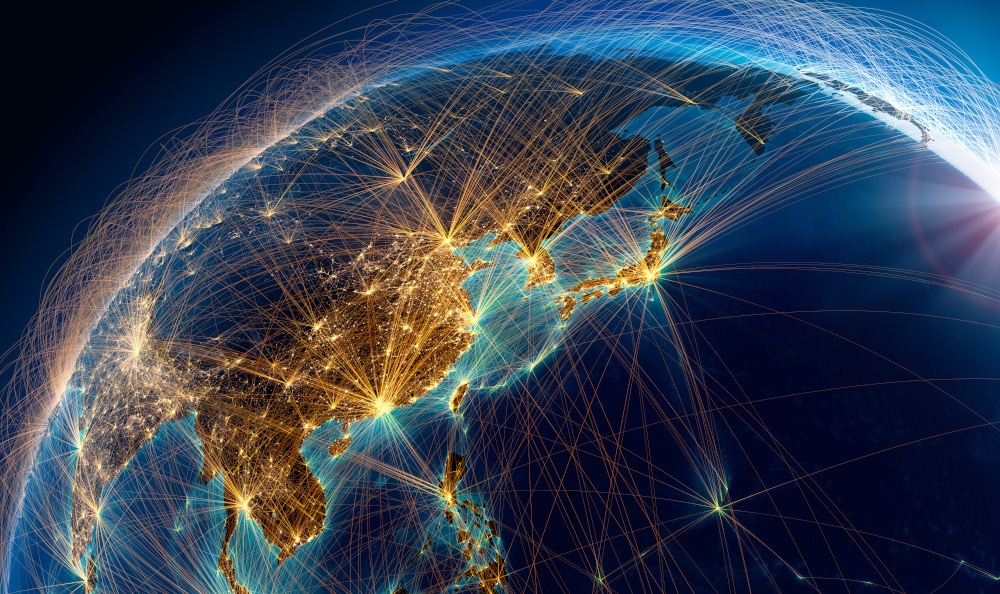5G set to rocket in Asia-Pacific5G set to rocket in Asia-Pacific
The number of 5G subscriptions in the Asia-Pacific region will rocket before the end of the decade, but it will cost operators hundreds of billions of dollars to get there, raising once again the age-old question of how they will monetise their investments in the technology.
July 24, 2023

The number of 5G subscriptions in the Asia-Pacific region will rocket before the end of the decade, but it will cost operators hundreds of billions of dollars to get there, raising once again the age-old question of how they will monetise their investments in the technology.
There will be 1.4 billion 5G connections in the region by 2030, or to put it another way, 41% of mobile connections will be over 5G, up from 4% last year, according to new predictions from the GSMA.
But the growth will come at a cost, as the mobile industry body’s The Mobile Economy Asia Pacific 2023 indicates. Between 2023 and 2030 mobile operators in the Asia-Pacific area will invest US$259 billion on their networks, most of it in 5G deployments, the GSMA notes.
While that is clearly a huge amount of money, it’s important to note that capex across the region is falling. Extensive 5G buildout in advanced markets over the past few years – South Korea and Japan are ahead of the game, to give the two usual examples, but the report also namechecks Australia and Singapore; it does not include China in its Asia-Pacific region – has meant record capex intensity in some markets. Those markets are now levelling off, but while others are picking up the pace this will not be sufficient to stem an overall decline, the GSMA claims.
“This is because earlier network generations, such as 3G and 4G, will remain integral to the connectivity landscape for the foreseeable future,” it said.
The industry body highlights India, unsurprisingly, as a market from which we can expect significant 5G growth from here on in. Bharti Airtel and Reliance Jio launched fairly small scale 5G services last year but seem to be really ramping up this year. India will add “tens of millions of 5G connections” this year alone, the GSMA predicts, and will doubtless be a significant contributor to the overall market figure in 2030.
5G growth in the region over the coming years will be driven by the types of factor you would expect: a fall in the average price of 5G devices; rapid network expansion in many markets; and government-led initiatives to integrate mobile-enabled technologies into more aspects of society.
But while growth is, and continues to be, important, operators’ focus is now turning towards monetisation, particularly in the more advanced 5G markets.
“As 5G adoption grows, the monetisation imperative will escalate. A ‘wow’ factor is required to attract new customers or incentivise existing ones towards higher spend,” the report reads.
That statement is universally true; operators the world over are anxious to monetise their 5G investments beyond faster mobile connectivity. But not all markets are the same, and therefore not all monetisation efforts are the same either.
The GSMA highlights extended reality (XR) as having the potential to facilitate a new breed of immersive customer experiences that will make good use of the better speed, latency and capacity offered by 5G. It points to NTT DoCoMo’s Qonoq unit created to develop XR hardware and software products; Jio Tesseract, which is building its own XR software; and LG Uplus’s efforts to create thousands of pieces of 3D VR content.
5G-based fixed wireless access (FWA) also has “the potential to drive incremental revenue opportunities for operators,” the GSMA says. And the technology’s momentum is building; as of March this year, 17 operators in eight Asia-Pacific markets had launched 5G FWA services.
FWA will be of particular relevance is markets where fixed broadband still tends to be based on DSL technologies, like Australia, and in markets with low overall fixed broadband penetration, like the Philippines. The GSMA reminds us that in May the Philippines’ Globe Telecom revealed that it generates a quarter of its home broadband revenues from FWA. Indonesia and Thailand will also be key markets for 5G FWA.
Essentially, much like in the rest of the world, the Asia-Pacific claims varying levels of 5G development and operators are in different places in the monetisation journey. The big difference with this collection of markets is the overall figures: when you’re talking about adding in the region of a billion 5G connections over just over six years, that’s always going to make headlines.
Get the latest news straight to your inbox. Register for the Telecoms.com newsletter here.
About the Author
You May Also Like










.png?width=300&auto=webp&quality=80&disable=upscale)


_1.jpg?width=300&auto=webp&quality=80&disable=upscale)